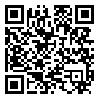Volume 15, Issue 2 (Summer 2011)
Physiol Pharmacol 2011, 15(2): 241-248 |
Back to browse issues page
Download citation:
BibTeX | RIS | EndNote | Medlars | ProCite | Reference Manager | RefWorks
Send citation to:



BibTeX | RIS | EndNote | Medlars | ProCite | Reference Manager | RefWorks
Send citation to:
Shekarforush S, Noroozzadeh A, Safari F, Golmanesh L, Khoshbaten A. Acute effect of burn trauma to small skin areas on myocardial ischemia reperfusion. Physiol Pharmacol 2011; 15 (2) :241-248
URL: http://ppj.phypha.ir/article-1-705-en.html
URL: http://ppj.phypha.ir/article-1-705-en.html
Abstract: (14897 Views)
Introduction: It has been reported that traumas such as transverse abdominal incision before myocardial ischemia
result in a significantly decreased infarct size. This phenomenon is named remote preconditioning of trauma. Since
small skin burn is one of most common traumas, the effect of this injury on ischemia-induced arrhythmias and infarct
size was investigated in a rat model of ischemia-reperfusion injury.
Methods: Twenty-four male Wistar rats were randomly assigned to 3 groups. In burn and sham groups, less than
1% of total body surface area of the dorsal skin was exposed to 100 ˚C and 37 ˚C water, respectively. In ischemic
preconditioning group, rats were exposed to one cycle of ischemia (5 min) and reperfusion (10 min). Ischemiareperfusion
injury was induced with occlusion and release of left coronary artery for 30 and 120 min, respectively.
Infarct size was measured using triphenyl tetrazolium chloride staining and arrhythmias were assessed in accordance
with Lambeth conventions.
Results: Infarct size was significantly reduced in ischemic preconditioning group compared with the sham group
(27 ± 2% vs. 50 ± 5% P < 0.01). Infarct size in the burn group was not significantly reduced. Irreversible ventricular
fibrillation was 50% of all ventricular fibrillation in the burn group, while it was 25% in the sham group, however, this
difference was not significant.
Conclusion: Acute minor coetaneous burn has neither protective nor harmful for the rat myocardial ischemiareperfusion
injury.
Type of Manuscript: Experimental research article |
Subject:
Cardiovascular Physiology/Pharmacology
| Rights and permissions | |
 |
This work is licensed under a Creative Commons Attribution-NonCommercial 4.0 International License. |





